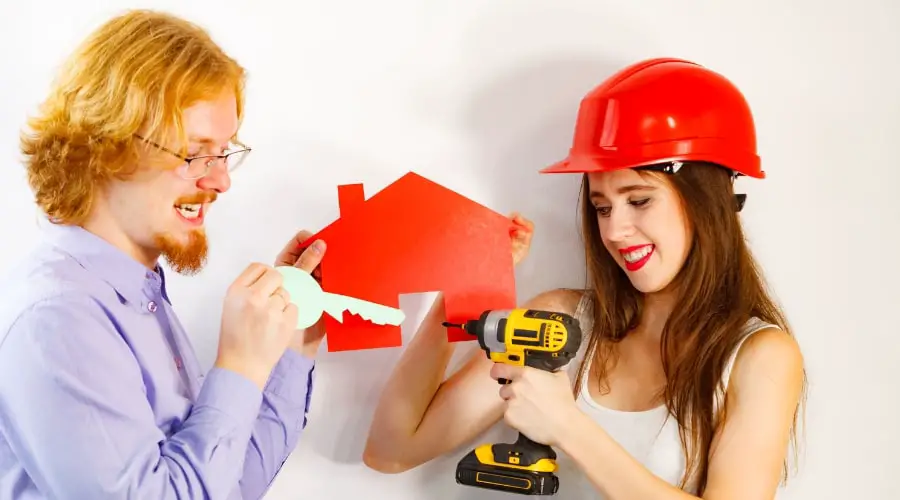You’ve just bought a new motorcycle helmet and you’re excited to hit the road. However, you notice that the helmet feels a bit tight when you first put it on. Is this normal, or is it a sign that you need a different size? In this article, we’ll explore why new helmets might feel tight and how to ensure you have the proper fit for maximum safety and comfort.

Why Proper Helmet Fit Matters
An ill-fitting helmet can compromise your safety and be uncomfortable to wear. A helmet that’s too tight can cause pressure points and headaches, while one that’s too loose can shift during a ride, obstructing your vision and providing less protection in the event of an accident. Finding the right balance is crucial for both comfort and safety.
The Science Behind Helmet Fit
Comfort and Stability
A properly fitting helmet should feel snug but not uncomfortably tight. It should provide even pressure around your head without any gaps or hot spots. The helmet should be stable on your head, not shifting or wobbling when you move.
Impact Protection
A well-fitting helmet is essential for impact protection. In the event of an accident, the helmet’s energy-absorbing liner and hard outer shell work together to dissipate impact forces and protect your head. If the helmet is too loose, it may not provide optimal protection, increasing the risk of injury.
Noise Reduction
A tight-fitting helmet can also help reduce wind noise while riding. Noise can cause fatigue and negatively impact your riding experience. By ensuring a good fit, you can minimize unwanted noise and enjoy a more comfortable ride.
How to Choose the Right Helmet Size
Measure Your Head
The first step in choosing the right helmet size is to measure your head. Use a flexible tape measure and wrap it around the widest part of your head, approximately one inch above your eyebrows. Make sure the tape measure is level and snug, but not too tight.
Consult a Sizing Chart
Once you have your head measurement, consult a helmet sizing chart from the manufacturer. These charts provide a range of head sizes for each helmet size, helping you choose the best fit.
Consider Different Helmet Shapes
It’s important to remember that helmets come in different shapes, such as round, intermediate oval, and long oval. Your head shape can influence how a helmet fits, so it’s essential to try on various helmet models and brands to find the best fit for your unique head shape.
Breaking in Your New Helmet
The Break-In Period
It’s normal for a new helmet to feel tight at first. Helmets are designed to break in and conform to your head over time. The break-in period can vary depending on
the helmet brand and materials, but it usually lasts for several hours of use. As you wear your new helmet, the interior padding will compress and adapt to your head, providing a more comfortable and secure fit.
Tips for Easing Helmet Tightness
If your new helmet feels too tight, there are a few things you can do to make it more comfortable:
- Wear the helmet for short periods to help break it in gradually.
- Gently massage the interior padding with your fingers to help it conform to your head.
- If the helmet has removable padding, try adjusting or swapping out the pads for a better fit.
Remember, a new helmet should feel snug but not painfully tight. If you’re experiencing discomfort or pain even after the break-in period, you may need to try a different size or model.
When to Replace a Helmet
Motorcycle helmets have a limited lifespan and should be replaced every five years or after a significant impact. Over time, the materials in a helmet can degrade, reducing its effectiveness in protecting your head. If your helmet no longer fits properly or shows signs of wear, it’s time to invest in a new one.
Helmet Accessories for Improved Fit
Cheek Pads
Adjustable cheek pads can help customize the fit of your helmet, ensuring a snug and secure fit. Many helmet manufacturers offer different thicknesses of cheek pads that can be easily swapped out to improve comfort and stability.

Liners
Some helmets come with removable and washable liners, allowing you to adjust the thickness for a more personalized fit. Liners can also help wick away moisture and keep your head cool during long rides.
Chin Straps
A well-adjusted chin strap is essential for securing your helmet and ensuring it stays in place during a ride. Look for helmets with adjustable and padded chin straps for maximum comfort and stability.
Frequently Asked Questions:
1. How long does it take for a new helmet to break in?
The break-in period for a new helmet can vary, but it usually lasts for several hours of use. As you wear the helmet, the interior padding will compress and conform to your head, providing a more comfortable fit.
2. How do I know if my helmet is too tight?
A helmet that is too tight can cause pressure points, headaches, and discomfort. If you’re experiencing pain or significant discomfort even after the break-in period, it may be a sign that you need a different size or model.
3. Can I adjust the fit of my helmet?
Yes, many helmets come with adjustable cheek pads, liners, and chin straps that allow you to customize the fit for maximum comfort and stability.
4. How often should I replace my helmet?
Motorcycle helmets should be replaced every five years or after a significant impact. The materials in a helmet can degrade over time, reducing its effectiveness in protecting your head.
5. What should I do if my helmet is still uncomfortable after the break-in period?
If your helmet remains uncomfortable even after breaking it in, you may need to try a different size or model. Consult a helmet sizing chart and try on various helmets to find the best fit for your head shape.
Conclusion
New helmets often feel tight at first, but they will break in and become more comfortable over time. It’s essential to find a helmet that fits your head properly for maximum safety, comfort, and noise reduction. Don’t hesitate to try on multiple helmets and consult sizing charts to ensure the best fit. By taking the time to find the right helmet and allowing it to break in, you’ll enjoy a safer and more comfortable riding experience.
Helmetslab is a website that focuses on providing in-depth reviews and information about different types of helmets, including motorcycle helmets and others helmets. I am writing a post with proper research on the info that helps helmet users.

